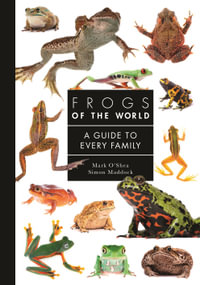This guide is intended primarily as a means of identifying any reptile occurring naturally within Victoria, Australia. It expands on a previous book, "The Snakes of Victoria" published in 1991, but extensively revises the snake information and brings taxonomy up to date.
It also includes lizards, tortoises and turtles. Dichotomous keys are used in the guide to provide a two-option system of elimination of possibilities and include illustrations of key characteristics to assist the reader. A short introduction into classification gives the reader an appreciation of where Victorian species belong on a world wide basis and explains how reptiles are named, and the conventions that are used.
The detailed description of each species includes a distribution map and photographs to facilitate identification. Notes on various aspects of the biology and ecology are included, together with an indication of the danger to man of venomous snakes. The closing chapters present a brief list of species, not recorded from Victoria, but found in close proximity in adjacent states: a short section on the recommended first aid treatment for snake bites: a summary of Victoria wildlife regulations; a glossary of terms used within the book; references; and, a index, including common names and recently used synonyms.
About the Authors
Peter Robertson worked in the public service for 15 years, undertaking regional fauna surveys and coordinating the research and management of several threatened reptiles and amphibians. He then founded an ecological consultancy where he continues to investigate the conservation management of Victoria's fauna. With a keen interest in photography, Peter has produced the majority of the photographs in this book.
John Coventry was Senior Curator of Herpetology at the National Museum of Victoria (now Museums Victoria), where he worked for nearly 50 years, providing inspiration and support to a generation of herpetologists. Two species of skinks are named after John, in recognition of his major contributions to the field. John retired from the museum in 2002, afforded the title of Curator Emeritus' until his death in 2007. Peter and John met in 1976, quickly forming an enduring friendship based on their shared passion for herpetology.
Together, they spent many thousands of hours in the field, carefully studying and documenting the reptile fauna of Victoria.

























